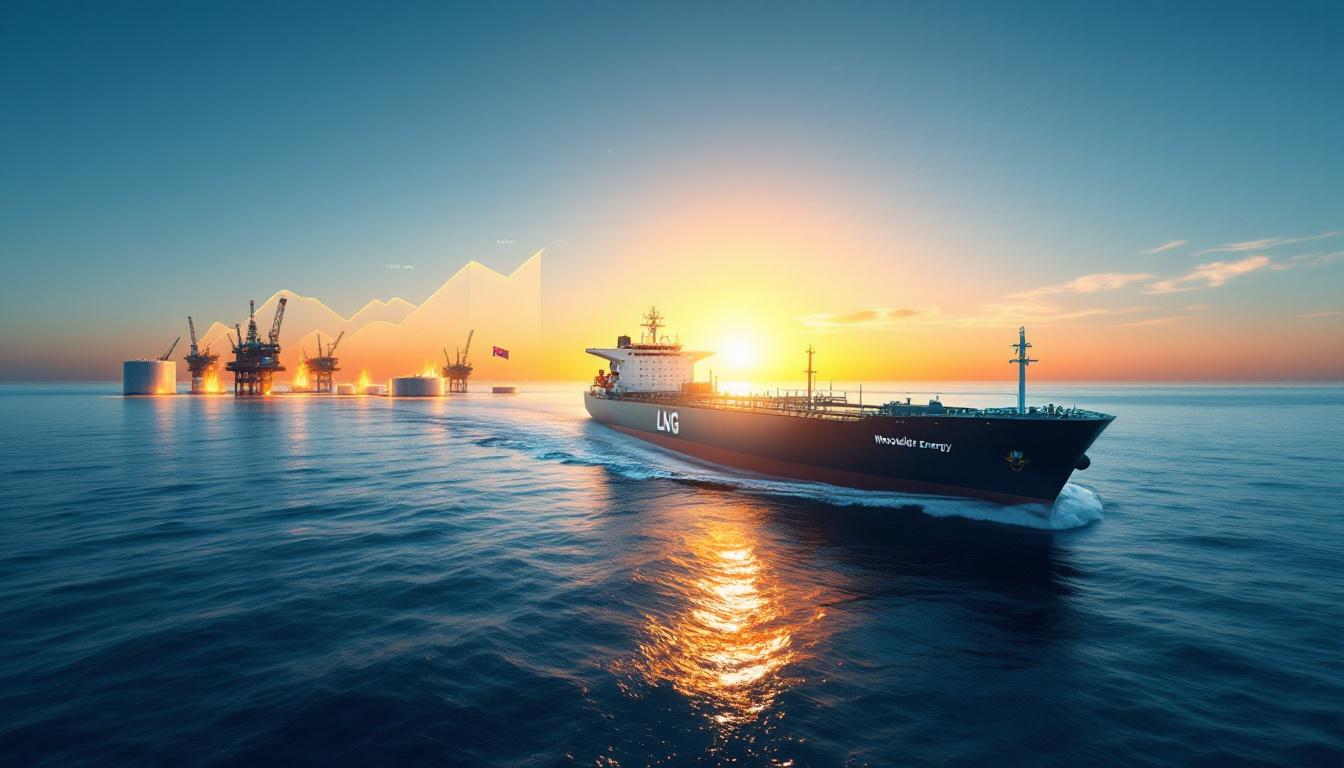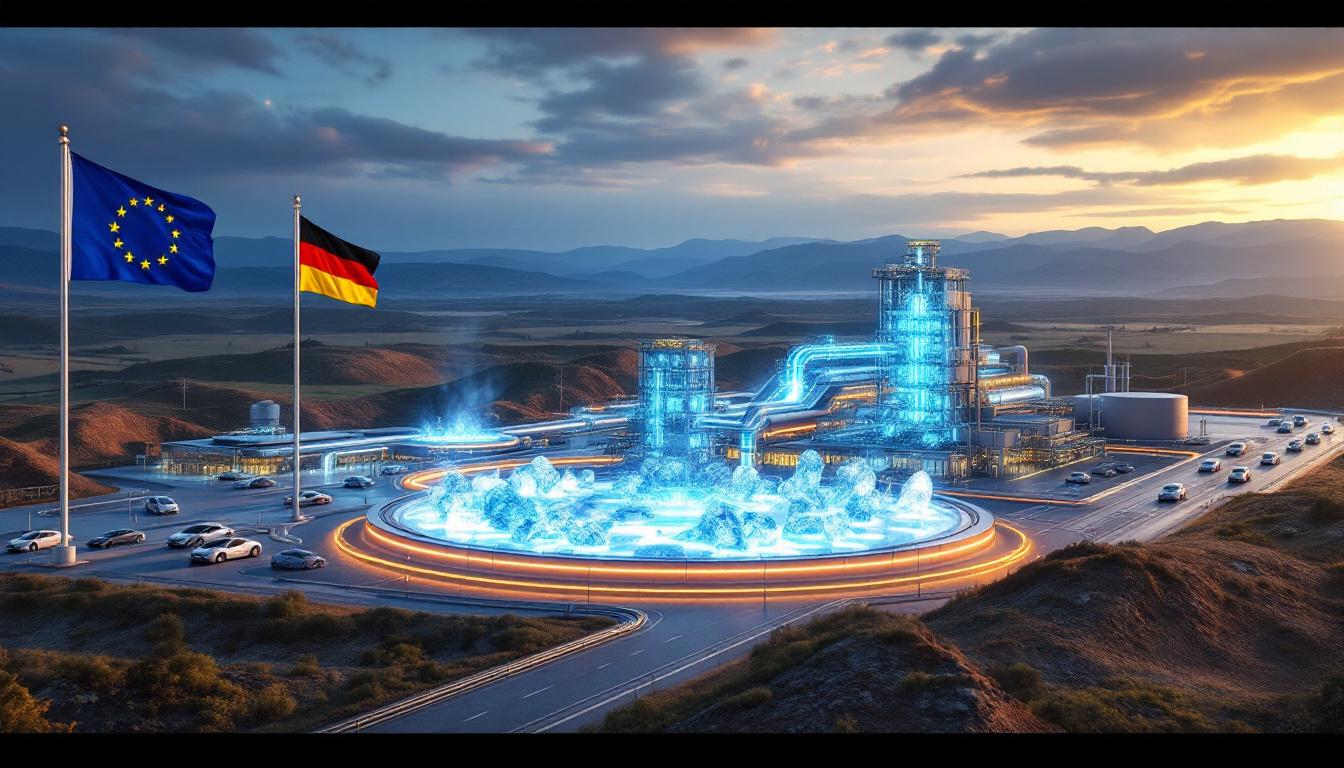What Is Renewable Gas in Australia? Understanding the Future of Green Energy
Renewable gas represents an evolving component of Australia's energy transition strategy, offering potential pathways to reduce carbon emissions while utilizing existing gas infrastructure. Unlike conventional natural gas extracted from fossil fuel deposits, renewable gas encompasses several alternative fuel sources produced through sustainable methods.
Unlike traditional natural gas, which contributes significantly to climate change, renewable gas aims to create a circular energy economy where carbon is either recycled or minimized in the production process.
Types of Renewable Gas Being Developed
Biomethane stands as one of the most commercially advanced renewable gas options in Australia. This gas is produced through anaerobic digestion—a natural process where microorganisms break down organic matter in the absence of oxygen. Sources typically include:
- Agricultural waste and manure
- Food processing byproducts
- Wastewater treatment plant sludge
- Landfill gas capture systems
Green hydrogen represents another promising renewable gas category that's gaining significant attention in Australia's energy landscape. Unlike grey or blue hydrogen (produced from fossil fuels), green hydrogen is created through electrolysis powered by renewable electricity, splitting water molecules into hydrogen and oxygen with zero carbon emissions.
Synthetic methane combines hydrogen with captured carbon dioxide in a process called methanation. This approach offers compatibility with existing natural gas infrastructure while potentially creating a carbon-neutral fuel, especially when the CO₂ is captured from industrial processes or directly from the atmosphere.
Biogas is the raw, unprocessed gas collected from decomposing organic matter. It contains methane (50-70%), carbon dioxide (30-40%), and trace gases. When purified to remove impurities and increase methane concentration, biogas becomes biomethane suitable for pipeline injection.
Current Market Status and Production Capacity
Australia's renewable gas sector remains in early development stages, with most projects operating at pilot or demonstration scale rather than commercial production levels. As Jonathon Davidson of The Market Online reports, "Canberra has recently moved to recognise hydrogen and biomethane as 'natural gas equivalents'" (Davidson, 2025), signaling growing regulatory support.
A notable development is Delorean Corporation's recent approval to issue renewable gas-based carbon offset certificates, creating a potential economic pathway for biomethane project development through carbon credit markets.
However, production capacity remains limited. Australia currently has fewer than ten operational biomethane plants injecting gas into the network, with most biogas facilities used for on-site electricity generation rather than grid injection.
Why Is Renewable Gas Controversial in Australia?
The renewable gas landscape in Australia has become increasingly contentious, with significant disagreement between regulators, industry proponents, and environmental groups about its viability and timeline for widespread adoption.
The ACCC's Landmark Position
In a development that sent shockwaves through the gas industry, the Australian Competition and Consumer Commission (ACCC) has taken unprecedented legal action against a major Australian pipeline operator. The lawsuit centers on the company's claims that renewable gas would be available to household consumers "within a generation"—a timeline the ACCC considers deeply misleading.
According to Davidson (2025), the ACCC is pursuing litigation specifically because the pipeline operator was "promising renewable gas to households within a generation," a claim the regulator considers deceptive based on current technological and economic realities.
Economic Feasibility Challenges
The ACCC has made what Davidson describes as an "extraordinary claim" that renewable gas won't reach Australian households for approximately 40 years. This projection directly contradicts industry optimism and represents one of the longest technology adoption timelines ever suggested by an Australian regulator.
The watchdog's position is that renewable gas is fundamentally "uneconomical and impossible to deliver at affordable costs within the next forty years" (Davidson, 2025). This assessment is based on several significant barriers:
- Prohibitive production costs: Current biomethane production costs 2-3 times more than natural gas, while green hydrogen remains 3-5 times more expensive
- Scale limitations: Australia lacks sufficient organic waste streams to produce biomethane at scale required for household supply
- Infrastructure constraints: Existing pipeline networks require significant modification for hydrogen compatibility
- Economic viability gap: The price differential between renewable and conventional gas exceeds what most households could afford
Industry Reality Check: "The ACCC's 40-year timeline represents a sobering counterpoint to industry enthusiasm about renewable gas adoption. While companies continue pursuing pilot projects, the fundamental economics suggest household adoption faces a generational timeframe rather than years." (Davidson, 2025)
This controversy highlights the tension between Australia's climate ambitions and the practical challenges of implementing emerging technologies at scale and affordable price points.
How Does Renewable Gas Compare to Traditional Natural Gas?
Understanding the differences between renewable gas and conventional natural gas provides crucial context for evaluating Australia's energy exports challenges and transition options.
Environmental Impact Assessment
While renewable gas promises environmental benefits, the actual impacts vary significantly by production method and source material.
| Aspect | Traditional Natural Gas | Renewable Gas |
|---|---|---|
| Carbon Emissions | High – primarily methane (CH₄) | Potentially lower or net-zero |
| Source Sustainability | Non-renewable fossil fuel | Renewable (waste, electricity, biomass) |
| Production Footprint | Extraction impacts ecosystems | Varies by production method |
| Leakage Concerns | Significant climate impact | Similar concerns for biomethane |
| Energy Density | High (approx. 38 MJ/m³) | Varies (biomethane similar, hydrogen lower) |
| Water Usage | Moderate (fracking intensive) | High for electrolysis, low for biomethane |
| Land Requirements | Concentrated extraction sites | Distributed collection/production facilities |
The environmental advantage of renewable gas depends heavily on production pathways. Biomethane from waste streams can achieve negative emissions by capturing methane that would otherwise enter the atmosphere, while green hydrogen's carbon footprint is directly tied to the renewable electricity source used for production.
Cost Comparison
As Davidson (2025) notes, "Production costs for renewable gas currently exceed those of natural gas by a significant margin," creating a fundamental economic barrier to widespread adoption. This cost differential stems from several factors:
- Capital intensity: Renewable gas facilities require substantial upfront investment
- Scale limitations: Most production remains at pilot scale without economies of scale
- Processing requirements: Additional purification and upgrading steps add cost
- Infrastructure adaptation: Pipeline modifications for hydrogen compatibility increase system costs
For industrial users, the premium may be justified by decarbonisation benefits or carbon pricing mechanisms. However, the cost gap presents a significant barrier for residential consumers, where price sensitivity remains high and alternatives like electrification may offer more cost-effective pathways to emissions reduction.
What Is Australia's Regulatory Approach to Renewable Gas?
Australia's regulatory framework for renewable gas is evolving rapidly, creating a complex landscape for industry participants navigating between federal ambitions and economic realities.
Recent Policy Developments
The Australian government has taken significant steps to integrate renewable gas into the nation's energy framework. As Davidson (2025) reports, "Canberra has recently moved to recognise hydrogen and biomethane as 'natural gas equivalents'" in federal policy, establishing regulatory pathways for these alternative gases to enter the existing gas network.
This recognition represents a critical milestone, as it:
- Creates legal definitions for renewable gases in energy legislation
- Establishes framework for safety and quality standards
- Enables regulatory compliance pathways for network injection
- Provides foundation for market development mechanisms
Additionally, Delorean Corporation recently "won the right to issue renewable-gas based carbon offset certificates" (Davidson, 2025), creating financial incentives for renewable gas production through Australia's carbon credit market. This approval enables projects to generate Australian Carbon Credit Units (ACCUs) for emissions avoided when renewable gas displaces fossil fuels.
These developments create an interesting policy contradiction, as Davidson notes, between the ACCC's pessimistic 40-year household adoption timeline and the federal government's apparent enthusiasm for renewable gas integration into existing systems.
Certification and Standards Framework
Australia is developing comprehensive certification frameworks to support renewable gas adoption:
- Guarantee of Origin schemes establish tracking systems for renewable gas production and consumption
- Technical standards define gas quality parameters for network injection
- Safety protocols establish hydrogen blending limits and equipment compatibility requirements
- Carbon accounting methodologies determine emissions reduction calculations for offset generation
These certification mechanisms are essential for creating market confidence and enabling renewable gas to participate in carbon reduction schemes. However, the practical implementation of these frameworks remains in early stages, with significant technical and regulatory details still being developed.
Which Companies Are Leading Renewable Gas Development in Australia?
Despite regulatory challenges, several companies are positioning themselves at the forefront of Australia's renewable gas sector, pursuing various production pathways and market applications.
Key Industry Players
Delorean Corporation has emerged as a significant player in Australia's biomethane landscape. As Davidson (2025) reports, the company "won the right to issue renewable-gas based carbon offset certificates," establishing a potential revenue stream beyond direct gas sales. Delorean focuses on converting organic waste streams into biomethane, targeting both grid injection and direct industrial supply.
An unnamed "major Australian pipeline operator" has also made substantial renewable gas claims, although its aggressive timeline for household availability has attracted ACCC scrutiny (Davidson, 2025). This litigation highlights the tension between infrastructure companies' strategic positioning and regulatory concerns about consumer messaging.
Other significant players in the Australian renewable gas ecosystem include:
- AGIG (Australian Gas Infrastructure Group): Pursuing hydrogen blending trials in residential networks
- Jemena: Developing biomethane injection projects connected to wastewater treatment facilities
- Energy Australia: Exploring renewable gas offerings for industrial customers
- BOC/Elgas: Investing in green hydrogen production and distribution capabilities
- APA Group: Assessing pipeline infrastructure for hydrogen compatibility
Major Projects and Investments
Despite the ACCC's pessimistic timeline for household adoption, significant investments are flowing into demonstration projects:
- Hydrogen Park South Australia: 5% hydrogen blending trial in residential network
- Western Sydney Green Gas Project: Biomethane production from wastewater treatment
- Malabar Biomethane Injection Project: Australia's first commercial-scale biomethane facility
- Clean Energy Innovation Hub (WA): Testing hydrogen production and blending technologies
- Hydrogen Energy Supply Chain: Export-focused hydrogen production facility in Victoria
These projects represent crucial learning opportunities, generating real-world data on production costs, technical challenges, and integration requirements that will inform future investment opportunities 2025 and scale-up decisions.
"While household renewable gas may face a multi-decade timeline, industrial applications are developing more rapidly, with companies seeking early-mover advantages in what could become a significant decarbonization pathway for hard-to-abate sectors." (Davidson, 2025)
What Are the Industrial Applications for Renewable Gas?
While household applications face significant barriers, industrial use cases for renewable gas show more immediate promise in Australia's energy transition landscape.
Current and Potential Use Cases
Industrial applications represent the "most viable near-term market" for renewable gas in Australia (Davidson, 2025), with several sectors showing particular potential:
- Manufacturing: High-temperature industrial processes that are difficult to electrify, such as steel production, cement manufacturing, and glass making, can utilize renewable gas with minimal modifications to existing equipment
- Heavy transport: Long-haul trucking, shipping, and other transport applications where battery electrification faces range or weight limitations
- Power generation: Flexible gas turbines for grid stabilization and peaking capacity to complement variable renewable electricity
- Chemical production: Feedstock for manufacturing processes that currently rely on natural gas molecules rather than just energy content
These applications benefit from several advantages compared to residential use:
- Centralized consumption: Large industrial users can connect directly to production facilities, reducing distribution infrastructure requirements
- Economies of scale: Bulk purchasing power and continuous consumption patterns improve economic viability
- Technical compatibility: Many industrial processes already use gas and can accommodate renewable alternatives with minimal adaptation
- Regulatory drivers: Carbon reduction mandates and sustainability commitments create willingness to pay premiums for lower-carbon alternatives
Case Study: Industrial Decarbonization Opportunities
Australian industry faces growing pressure to reduce emissions, making renewable gas an attractive option for sectors with limited alternatives.
As Davidson (2025) observes, "Industrial end-users… have higher willingness to pay for decarbonization" compared to residential consumers. This price tolerance reflects both regulatory pressure and market demand for lower-carbon products.
For example, the steel industry—responsible for approximately 7% of Australia's emissions—faces particular challenges in decarbonization. While electric arc furnaces offer one pathway, many processes require the chemical properties of carbon-based fuels. Hydrogen-based direct reduction of iron represents a promising alternative that maintains necessary chemical reactions while potentially eliminating carbon emissions.
Similarly, the chemical industry relies on natural gas not just for energy but as a molecular feedstock for products like fertilizer, plastics, and pharmaceuticals. Renewable gas offers a pathway to maintain production while reducing the carbon footprint of these essential products.
What Are the Technical Challenges of Renewable Gas Implementation?
Renewable gas faces significant technical hurdles beyond just production costs, creating complex engineering challenges throughout the value chain.
Infrastructure Adaptation Requirements
Australia's existing natural gas infrastructure requires substantial modifications to accommodate renewable gases, particularly hydrogen. The infrastructure adaptation trends show several key challenges:
- Pipeline material compatibility: Hydrogen can cause embrittlement in certain steel alloys used in transmission pipelines, potentially requiring replacement or operational constraints
- Compression and metering equipment: Different gas compositions affect compression ratios and metering accuracy, necessitating equipment recalibration or replacement
- End-use appliance compatibility: Hydrogen blends above certain thresholds may affect combustion characteristics in existing appliances
- Safety systems: Leak detection and odorization systems require adaptation due to hydrogen's different physical properties
- Storage solutions: Hydrogen's lower volumetric energy density requires approximately three times more storage volume than methane for equivalent energy content
These adaptation requirements add significant cost to renewable gas integration beyond just production expenses. While biomethane is largely compatible with existing infrastructure (after appropriate cleaning and upgrading), hydrogen's different physical and chemical properties create more substantial technical barriers.
Production Scaling Limitations
Current renewable gas production methods face inherent scaling constraints:
- Biomethane feedstock limitations: Australia produces approximately 20 million tonnes of suitable organic waste annually, which could theoretically replace only about 5-10% of current natural gas consumption
- Renewable electricity constraints: Green hydrogen production via electrolysis requires substantial renewable electricity, potentially competing with direct electrification for limited resources
- Land and water requirements: Large-scale biogas facilities require significant land area, while electrolysis demands substantial water inputs (approximately 9 liters per kilogram of hydrogen)
- Geographical considerations: Optimal production locations may not align with existing gas infrastructure or demand centers
- Intermittency challenges: Renewable electricity variability affects hydrogen production efficiency and economics
These limitations create fundamental constraints on renewable gas's potential to replace conventional natural gas at current consumption levels, supporting the ACCC's assessment of long-term adoption timelines for complete household conversion.
How Does Renewable Gas Fit Into Australia's Broader Energy Transition?
Renewable gas exists within a complex ecosystem of competing and complementary clean energy pathways, raising important questions about its optimal role in Australia's energy future.
Relationship to Electrification Trends
Australia is experiencing rapid electrification across multiple sectors, creating both tension and potential synergy with renewable gas pathways.
For residential heating and cooking—traditional strongholds of natural gas—direct electrification through heat pumps and induction cooking offers immediate emissions reduction potential where renewable electricity is available. These technologies typically deliver greater energy efficiency than gas alternatives, with heat pumps providing 3-4 units of heat for each unit of electricity consumed.
However, as Davidson (2025) observes, "Renewable gas may play an important role in sectors difficult to electrify," particularly in industrial applications requiring high temperatures or molecular feedstocks. This creates a potential complementary relationship, where electrification addresses readily convertible sectors while renewable gas targets harder-to-abate applications.
The competition extends to renewable resources themselves. Green hydrogen production via electrolysis requires substantial electricity inputs—potentially 50-55 kWh per kilogram of hydrogen. This creates opportunity costs, as that same renewable electricity could power homes and businesses directly with greater efficiency.
Integration with Other Renewable Technologies
The most promising applications for renewable gas involve integration with other renewable energy systems to create synergistic benefits:
- Excess renewable electricity storage: Converting surplus solar and wind generation to hydrogen during periods of oversupply, creating seasonal storage capabilities beyond what batteries can provide
- Waste-to-energy pathways: Combining biogas production with agricultural and municipal waste management to address multiple sustainability challenges simultaneously
- Grid stabilization services: Using renewable gas in fast-response turbines to support grid stability as coal plants retire and variable renewable penetration increases
- Renewable gas networks: Developing dedicated hydrogen networks in industrial clusters to support multiple decarbonization applications without burdening existing natural gas infrastructure
These integrated approaches potentially offer greater value than standalone renewable gas systems, providing multiple services across energy, waste management, and industrial production sectors.
Ready to Stay Ahead of Australia's Next Mineral Discovery?
Don't miss out on the next lucrative ASX mineral discovery – Discovery Alert's proprietary Discovery IQ model delivers real-time alerts on significant findings, empowering you to make informed investment decisions before the broader market. Explore why major mineral discoveries can lead to substantial returns by visiting Discovery Alert's dedicated discoveries page and begin your 30-day free trial today.




